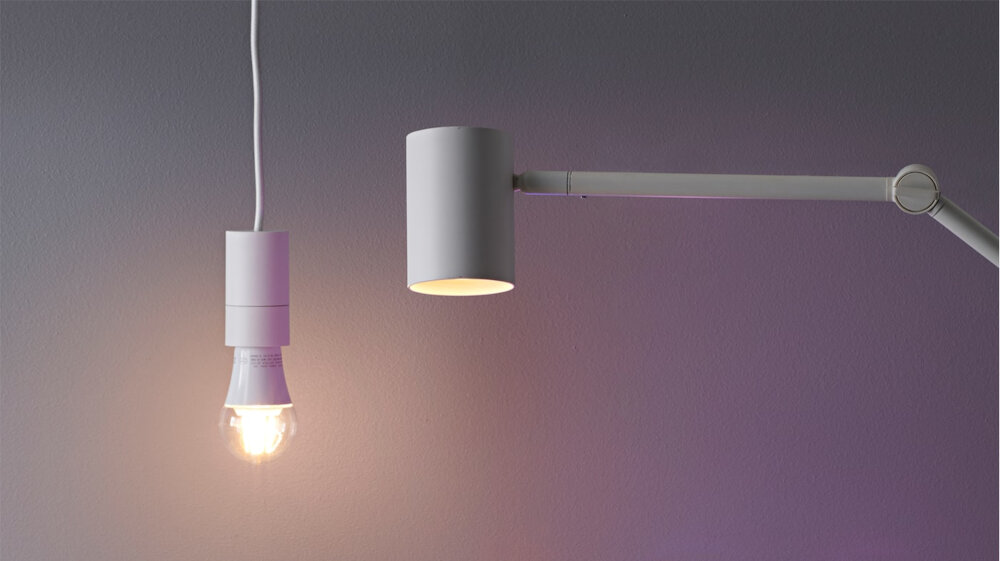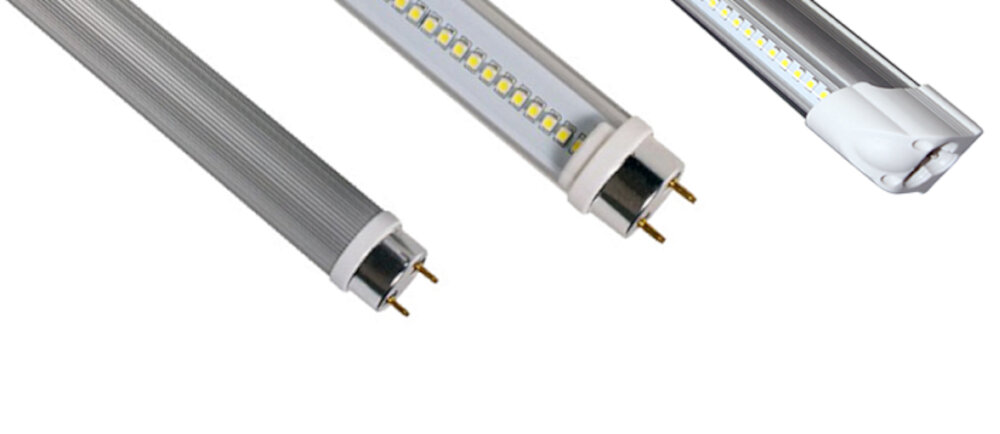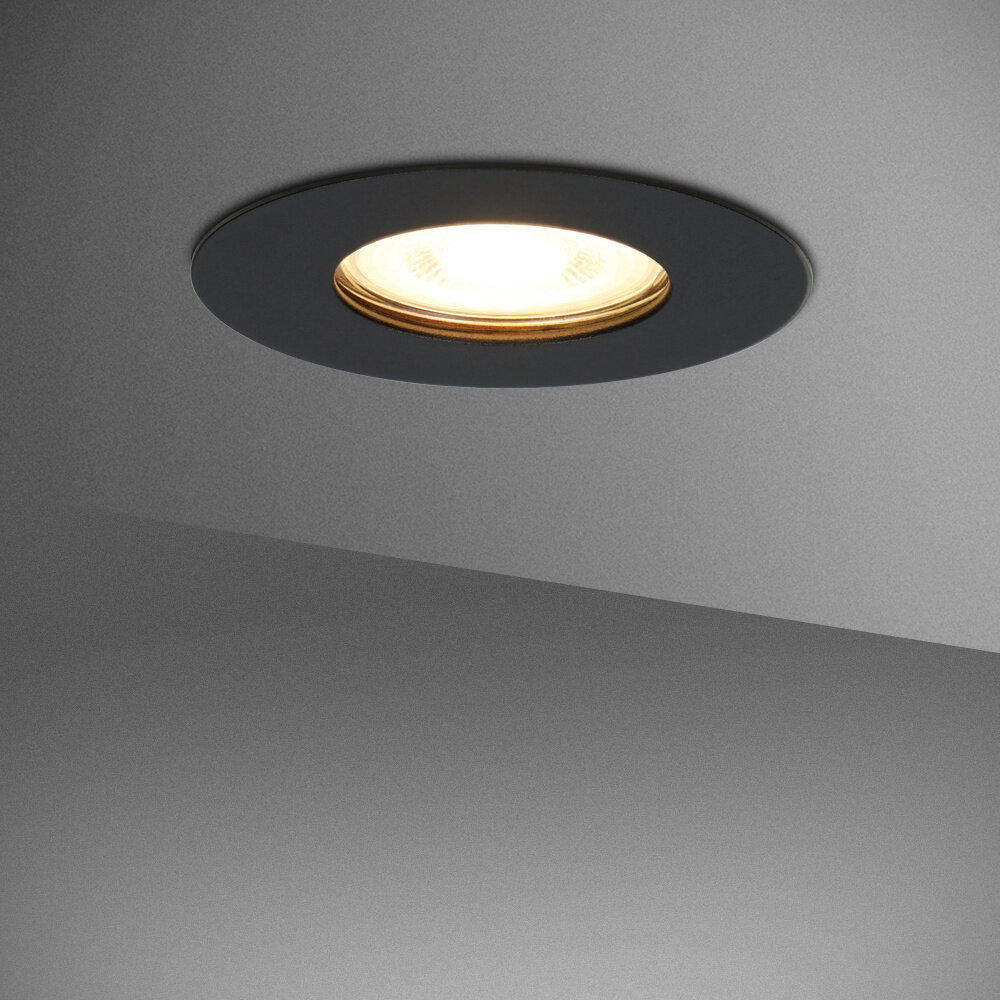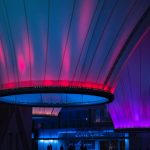Longevity Unveiled: How Long Do LED Light Bulbs Last?

LED light bulbs have been around for quite some time, and they’re becoming increasingly popular due to their energy efficiency and cost-effectiveness. They’ve been touted as a long-lasting alternative to traditional incandescent bulbs, but just how long do LED light bulbs last? This is an important question to answer, as it can help consumers make informed decisions when purchasing light bulbs for their homes or businesses. In this article, we will take a closer look at the lifespan of LED light bulbs, factors that can affect their longevity, and how to make them last as long as possible. The average lifespan of an LED light bulb is typically between 25,000 and 50,000 hours, which equates to between 2.8 and 5.7 years of continuous use. This is significantly longer than traditional incandescent bulbs, which typically last for around 1,000 hours, and even longer than compact fluorescent bulbs, which typically last for around 8,000 hours. However, there are several factors that can affect how long an LED light bulb lasts, such as the quality of the bulb, the environment it’s used in, and how often it’s turned on and off. By understanding these factors and taking steps to maximize the lifespan of LED light bulbs, consumers can save money and reduce their environmental impact over time.
LED (Light Emitting Diode) light bulbs are a type of lighting technology that has gradually become more popular in recent years. Unlike traditional incandescent bulbs, which use a filament to produce light, LED bulbs use a semiconductor to generate light. This makes LED bulbs more energy-efficient and longer-lasting than incandescent bulbs, with some LED bulbs claiming lifespans of up to 25,000 hours. Additionally, LED bulbs come in a wide range of colors and shapes, making them a versatile option for a variety of lighting needs. Overall, LED bulbs are a great choice for those looking for a more sustainable and long-lasting option for their home lighting needs.
The lifespan of LED light bulbs is of great importance in terms of saving money, energy, and time. LED bulbs have a longer lifespan than traditional bulbs, making them a more sustainable and cost-effective option. Not only do they require less frequent replacement, but they also use less energy, thus reducing electricity bills. Furthermore, the longevity of LED bulbs reduces the amount of waste generated from light bulbs, making them an environmentally friendly option. Investing in LED bulbs means investing in a long-term solution that benefits both the wallet and the planet.
The purpose of the article \Longevity Unveiled: How Long Do LED Light Bulbs Last\ is to provide readers with a comprehensive understanding of the lifespan of LED light bulbs. The article delves into the science behind LED technology, explaining how these bulbs differ from traditional incandescent and fluorescent bulbs. It also clarifies common misconceptions around LED lifespan and highlights the factors that can affect how long LED bulbs last. The article aims to educate readers on the benefits of LED bulbs, including their energy efficiency and cost-effectiveness, and how to choose the right LED bulb for their needs. Overall, the article seeks to empower readers with knowledge on LED bulb longevity, helping them make informed decisions when it comes to lighting their homes and businesses.
What is an LED light bulb?

An LED light bulb is a type of lighting technology that uses light-emitting diodes (LEDs) to produce light. Compared to traditional incandescent light bulbs, LED light bulbs are more energy-efficient, long-lasting, and durable. LED light bulbs are available in a range of shapes and sizes, making them suitable for a variety of lighting applications. The lifespan of an LED light bulb is typically much longer than that of a traditional incandescent light bulb. LED light bulbs can last up to 25,000 hours, which is about 25 times longer than a traditional incandescent light bulb. This means that LED light bulbs require less frequent replacement, which can save you time and money in the long run. Additionally, LED light bulbs are more energy-efficient, which means that they use less electricity to produce the same amount of light as a traditional incandescent light bulb. This can also help you save money on your energy bills over time.
LED light bulbs are a highly efficient type of lighting technology that utilizes light-emitting diodes to produce illumination. Unlike traditional incandescent bulbs, LED bulbs do not use a filament to create light, which makes them much more energy-efficient and longer-lasting. They are known for their durability, low heat output, and low power consumption, making them an ideal choice for both residential and commercial lighting applications. Additionally, LED bulbs are available in a wide range of colors and brightness levels, making them highly versatile and adaptable to different lighting needs. Overall, LED light bulbs are a highly effective and long-lasting lighting solution that offers numerous benefits over traditional lighting technologies.
LED light bulbs are designed to last longer than traditional incandescent bulbs. The main reason behind their longevity is their energy-efficient technology that uses semiconductors to convert electricity into light. Unlike incandescent bulbs, they don’t use a filament that can burn out, and they emit very little heat, which reduces wear and tear on the bulb. The lifespan of an LED bulb is determined by the quality of its components and the conditions in which it operates. A high-quality LED bulb can last up to 25,000 hours or more, which is significantly longer than an incandescent bulb’s typical 1,000-hour lifespan. Additionally, LEDs are built with solid-state technology, which means they are highly durable and resistant to shock, vibration, and extreme temperatures. Overall, LED light bulbs are a reliable and long-lasting lighting solution for homes and businesses alike.
LED light bulbs and traditional light bulbs differ in several ways, including their longevity. While traditional light bulbs use a filament to produce light, LED bulbs use semiconductor technology. This means that LED bulbs don’t have a filament that can burn out, which is a common cause of failure in traditional bulbs. Additionally, LED bulbs are much more energy-efficient than traditional bulbs, using up to 80% less energy to produce the same amount of light. This increased efficiency means that LED bulbs can last up to 25 times longer than traditional bulbs, making them a much more cost-effective lighting option in the long run. Overall, the differences between LED and traditional light bulbs highlight the benefits of switching to LED technology for improved longevity and energy efficiency.
How long do LED light bulbs last?

LED lights are rapidly gaining popularity in the market as an energy-efficient alternative to traditional incandescent bulbs. One of the most significant benefits of LED bulbs is their extended lifespan, which can last up to 25,000 to 50,000 hours. This means that if you use your LED bulb for 8 hours a day, it can last you up to 17 years or more. This longevity can save both money and time, as LED bulbs do not require frequent replacements like their traditional counterparts. Moreover, LED bulbs tend to lose their brightness gradually over time, avoiding sudden burnouts, which makes them a reliable choice for long-term use. The longevity of LED bulbs is dependent on various factors, such as the quality of the bulb, how often it’s used, and its operating conditions. LED bulbs that are exposed to excessive heat or humidity may have a shorter lifespan than those used in ideal conditions. However, if you invest in high-quality LED bulbs and use them correctly, they can last you for decades, providing you with consistent and energy-efficient lighting. Overall, the long lifespan of LED bulbs makes them a cost-effective and sustainable lighting option for both homes and businesses.
The longevity of LED light bulbs is a major selling point for consumers looking to upgrade their lighting solutions. On average, LED light bulbs can last up to 25,000 hours, which is significantly longer than traditional incandescent bulbs. This lifespan is attributed to the fact that LED bulbs do not have a filament that burns out over time, but rather rely on the movement of electrons through a semiconductor to produce light. Additionally, LED bulbs are more energy-efficient and produce less heat, which can contribute to their extended lifespan. Overall, the durability and long lifespan of LED light bulbs make them an excellent investment for those looking to save money on their energy bills and reduce their environmental impact.
The lifespan of LED light bulbs can be affected by several factors. One of the most significant factors is the quality of the LED chip used in the bulb. Higher quality chips tend to last longer than lower quality ones. Additionally, the temperature of the environment in which the bulb is used can impact its lifespan. Higher temperatures can cause the bulb to degrade more quickly. The frequency of use and the amount of time the bulb is left on also play a role. LED bulbs that are used for longer periods of time will generally have a shorter lifespan. Finally, the quality of the power supply and any voltage fluctuations can affect the longevity of the bulb. By considering these factors, consumers can make informed decisions when purchasing LED light bulbs to ensure they get the best lifespan possible.
When compared to traditional light bulbs, LED light bulbs undoubtedly offer a longer lifespan. Traditional bulbs typically last around 1,000 hours, while LEDs can last up to 50,000 hours or more, making them a much more cost-effective and energy-efficient option. Additionally, traditional bulbs are known to emit a significant amount of heat, making them less safe and less efficient than LEDs, which emit less heat and consume less energy overall. While LED bulbs may have a higher upfront cost, their longevity and energy efficiency make them a wise investment in the long run. Overall, the difference between traditional and LED light bulbs is like night and day, with LEDs offering a superior and more sustainable lighting solution.
How to extend the lifespan of LED light bulbs

LED light bulbs are a popular choice among consumers as they are energy-efficient and long-lasting. However, to maximize their lifespan, there are certain practices that should be followed. Firstly, it is important to keep the LED light bulbs clean and free of dust. Dust can accumulate on the bulbs and block the light output, leading to decreased efficiency and a shorter lifespan. To clean the bulbs, simply wipe them gently with a soft cloth. Secondly, it is important to avoid using LED light bulbs in high-temperature environments. LED bulbs are sensitive to heat, and exposure to high temperatures can cause the bulbs to degrade and fail prematurely. Therefore, it is important to avoid using LED bulbs in enclosed fixtures or areas that are exposed to direct sunlight or high temperatures. By following these simple practices, the lifespan of LED light bulbs can be extended significantly, resulting in cost savings and reduced environmental impact.
Proper usage of LED light bulbs is essential to ensuring they last as long as possible. Firstly, it’s important to choose the right bulb for the job, taking into account factors such as brightness and color temperature. Secondly, avoid using LED bulbs in enclosed fixtures that don’t allow for proper ventilation, as this can cause them to overheat and fail prematurely. It’s also important to avoid frequently turning LED bulbs on and off, as this can shorten their lifespan. Finally, be sure to handle LED bulbs with care, avoiding excessive jarring or dropping, which can damage the fragile components inside. By following these tips, you can help ensure that your LED bulbs last for many years to come.
Maintenance and cleaning are essential aspects of ensuring the longevity of LED light bulbs. Regular cleaning of the bulb surface and surrounding fixtures help to prevent dust and dirt accumulation, which can reduce the bulb’s efficiency and lifespan. It is advisable to clean the bulbs with a soft cloth or a feather duster, and if necessary, use a mild detergent to remove stubborn stains. Also, it is crucial to inspect the bulbs regularly for any signs of damage or wear and tear, such as cracks, discoloration, or flickering. Timely replacement of damaged or worn-out bulbs can prevent electrical hazards and extend the life of the remaining bulbs in the system. Proper maintenance and cleaning practices can significantly increase the lifespan of LED light bulbs and enhance their performance, contributing to a more energy-efficient and eco-friendly lighting system.
To avoid common mistakes that reduce lifespan, it’s essential to pay attention to our daily habits and environmental factors. One of the most significant factors that affect our longevity is our diet. Consuming processed foods, sugary drinks, and excess alcohol can lead to chronic diseases such as obesity, diabetes, and heart disease, which can reduce our lifespan. Another factor is our sedentary lifestyle, which increases the risk of developing health conditions such as arthritis and back pain. It’s important to maintain an active lifestyle by incorporating regular exercise into our routine. Additionally, exposure to environmental pollutants such as air pollution, chemicals, and UV rays can also impact our lifespan. Taking preventive measures such as wearing protective gear and avoiding harmful environments can help reduce the risk of exposure to these pollutants.
Benefits of using LED light bulbs

LED light bulbs have revolutionized the lighting industry in recent years due to their numerous benefits. One of the most significant advantages of using LED light bulbs is their longevity. LED light bulbs have a lifespan of up to 25,000 hours, which is significantly longer than traditional incandescent bulbs that only last up to 1,200 hours. This means you can save money on replacements and maintenance costs in the long run. Additionally, LED bulbs are more energy-efficient than traditional bulbs, which means you can save money on your electricity bill as well. They consume up to 85% less energy than traditional bulbs, which can significantly reduce your carbon footprint. Another significant benefit of using LED light bulbs is their durability. LED bulbs are constructed with solid-state technology, which makes them more resistant to shock, vibration, and extreme temperatures. This makes them suitable for use in a wide range of environments, including outdoor applications. LED bulbs also emit less heat than traditional bulbs, making them safer to use and reducing the risk of fires. Furthermore, LED bulbs do not contain harmful substances like mercury, which is present in traditional bulbs. This makes LED light bulbs more environmentally friendly and safer to dispose of. Overall, using LED light bulbs can provide numerous benefits that can help you save money, reduce your carbon footprint, and improve the safety and durability of your lighting.
Energy efficiency is the key factor when it comes to LED light bulbs. These bulbs have a longer lifespan than traditional incandescent bulbs and consume less energy, making them a more eco-friendly and cost-effective option. LED bulbs operate at a much lower temperature, which means less energy is wasted as heat. Additionally, they do not contain any hazardous materials, making them a safe and sustainable lighting solution. LED bulbs have revolutionized the lighting industry, providing a long-term solution that is both efficient and environmentally friendly.
One of the most significant advantages of LED light bulbs is their cost savings potential. While LED bulbs may have a higher upfront cost than traditional incandescent bulbs, they can last up to 25 times longer, meaning fewer replacements and less money spent on replacements over time. In addition, LED bulbs consume less energy, resulting in lower electricity bills. This combination of longer lifespan and energy efficiency can ultimately result in significant cost savings for consumers and businesses alike.
The environmental benefits of LED light bulbs cannot be overstated. These bulbs are incredibly energy-efficient, using up to 80% less energy than traditional incandescent bulbs. This translates to a significant reduction in carbon emissions and a lower overall carbon footprint. Additionally, LED bulbs are free from toxic materials such as mercury and lead, which are commonly found in other types of bulbs. This means that they are safer for both the environment and human health. With a lifespan that is several times longer than traditional bulbs, LED lights also help to reduce waste and save resources. Overall, LED bulbs are a smart choice for anyone looking to reduce their environmental impact without sacrificing quality or performance.
In conclusion, LED light bulbs have been found to be the most long-lasting type of lighting technology currently available in the market. They offer numerous benefits such as lower energy consumption, reduced environmental impact, and cost-effectiveness. The lifespan of LED bulbs is determined by several factors such as the quality of materials used, operating temperature, and usage patterns. On average, LED bulbs can last up to 25,000-50,000 hours, which is significantly longer than traditional incandescent bulbs. Additionally, LED bulbs are less likely to fail suddenly, and they gradually dim over time, indicating when it is time to replace them. Ultimately, investing in LED bulbs is a smart choice for anyone looking to save money, reduce their carbon footprint, and enjoy long-lasting lighting solutions.
In conclusion, LED light bulbs are a remarkable innovation that has revolutionized the lighting industry. They offer numerous benefits such as energy efficiency, cost-effectiveness, and longevity. With an extended lifespan of up to 50,000 hours, LED light bulbs are a wise investment for anyone looking for a long-term lighting solution. Additionally, with the increasing demand for eco-friendly products, LED light bulbs are an excellent choice as they are more environmentally friendly than traditional lighting options. Therefore, if you’re looking to upgrade your lighting system, investing in LED light bulbs is an excellent choice that will not only save you money in the long run but also contribute to a greener planet.
Conclusion

In conclusion, LED light bulbs are the future of lighting due to their longevity and energy efficiency. The lifespan of an LED bulb is significantly longer than traditional incandescent bulbs, making them a cost-effective and sustainable option for both residential and commercial purposes. With an average lifespan of 25,000 to 50,000 hours, LED bulbs are durable, reliable, and low-maintenance. Moreover, LED technology is continuously evolving, with new advancements being made to improve their performance and reduce their environmental impact. As such, investing in LED lighting is not only a smart financial decision, but also a responsible choice for the planet.




